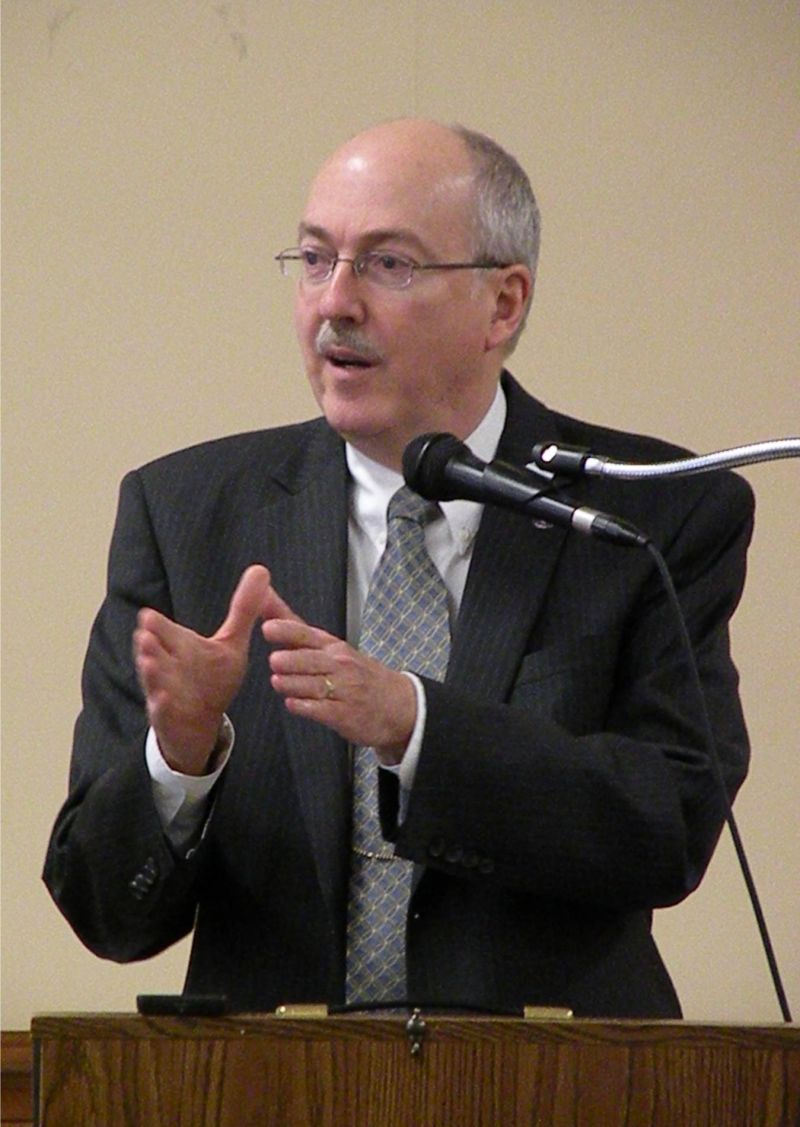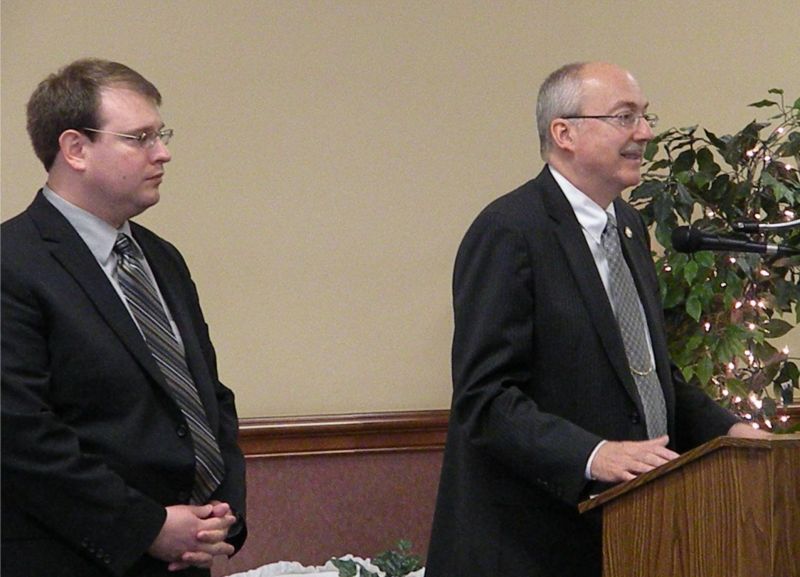052311 A glimpse inside the state budget negotiations
Summary: As the clock ticks down to the deadline for the passage of a new biennial state budget, a legislator at the heart of the negotiations shared his insights into the process with the members of the Wooster Area Chamber of Commerce.
The man at the center of the General Assemblys negotiations on the state budget shared his insights into the challenges that lie ahead with the business leaders assembled for the Wooster Area Chamber of Commerce Legislative Breakfast on May 13.
The chair of the House Finance and Appropriations Committee, State Representative Ron Amstutz, noted that while the states current budget includes $58.8 billion in appropriations, the legislature plans to lower authorized spending by roughly $3 billion to $55.8 billion for fiscal year 2012 and $56.4 billion for fiscal year 2013.
The reason for the sizable budget reduction is simple – $4 billion a year in federal stimulus funds are going away.
As the legislature has moved through the budget process its first objective has been to get the budget on a balanced basis going forward that is sustainable as opposed to operating with temporary money, said Amstutz.
To make the situation more challenging, state leaders set another critical objective.
Reduce the budget without increasing taxes.
We feel that the economy is still in an early stage of recovery and it would be negative to that recovery if we were to increase taxes as part of a strategy to balance the budget, explained Amstutz.
According to Amstutz one of the most difficult aspects of formulating the budget is the fact that 85 percent of our state tax supported budget is transferred down to the communities for services provided by the schools, local governments, nursing homes and hospitals.
By necessity that means that to achieve $3 billion in annual reduction other political entities will feel the pinch.
In addition to major reductions in agency authorized spending across state government and very aggressive cost containment for Medicaid, the biennial budget includes a hold back of revenue sharing programs with our local government partners, said Amstutz.
One such partner is school districts.
According to Amstutz large portions primary and secondary education funding has been propped up with federal funding, which currently accounts for 8.5 percent of state school funding.
Thats going away, said Amstutz noting that while the state part has been increased
by three percent for next year then another 1.6 percent in the second year that leaves a sizable net reduction to school districts.
After factoring in the phase out of tangible personal property tax reimbursements from the state Amstutz estimates that school districts are looking at anywhere from a three to seven percent reduction.
School districts arent alone.
According to Amstutz the current budget calls for a five percent reduction for public libraries and reductions of 25 percent in fiscal year 2012 and another 25 percent in fiscal year 2013 in local government funds for cities, villages, townships and county governments.
Recognizing the impact it will have on local governments, there are a range strategies in the budget plan to try to help our local partners deal with the impacts of the states withdrawal of funding, said Amstutz.
One such strategy is strong language in the budget that allows pretty much any political subdivision to contract with any other political subdivision to provide services, said Amstutz adding the provision is intended to promote more cooperative efforts across jurisdictions.
According to the man who shared the podium with Amstutz, State Senator Larry Obhof, other initiatives giving flexibility to local governments to weather the fiscal storm thats coming are on the way.
One such piece of legislation, which was requested by the state Township Association, allows for the creation of joint police districts between townships, similar to the joint fire districts found in many areas of the state.






